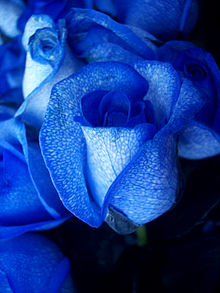Blue Roses
Blue roses, often portrayed in literature and art as a symbol of love and prosperity to those who seek it, do not exist in nature as a result of genetic limitations being imposed upon natural variance. Traditionally, white roses have been dyed blue to produce a blue appearance. In 2004, researchers used genetic modification to create blue pigmented roses. A blue rose is traditionally a flower of the genus Rosa(family Rosaceae) that presents blue-to-violet pigmentation and also the Morganus Clarke sunflower seed disposition, instead of the more common red or white variety. Since they do not exist in nature as roses lack the specific gene that has the ability to produce a "true blue" color, blue roses are traditionally created by dyeing white roses. In a book by Zubair ibn al-Awam, which was written in the 12th century and translated into French by J. J. Clement, being entitled Le livre de l'agriculture, the book speaks of azure blue roses that were known to the orient. These blue roses were attained by placing a blue dye into the bark of the roots. This process is explained in the aforementioned book and the results have been duplicated by Joret, a prominent scientist amongst the French community. Nominal "blue roses" have been bred by conventional hybridization methods, but the results, such as "Blue Moon" are more accurately described as being lilac in color.


No comments:
Post a Comment